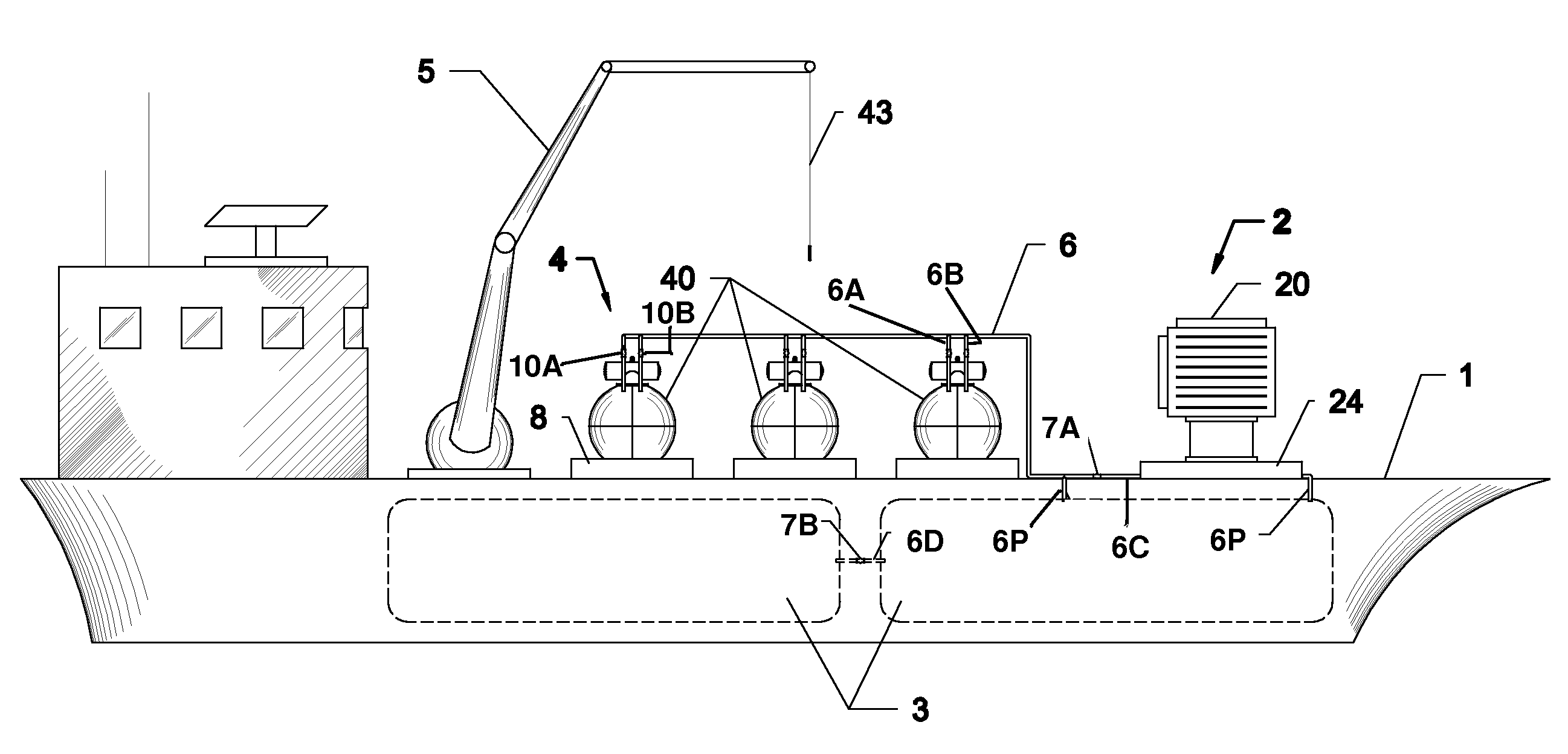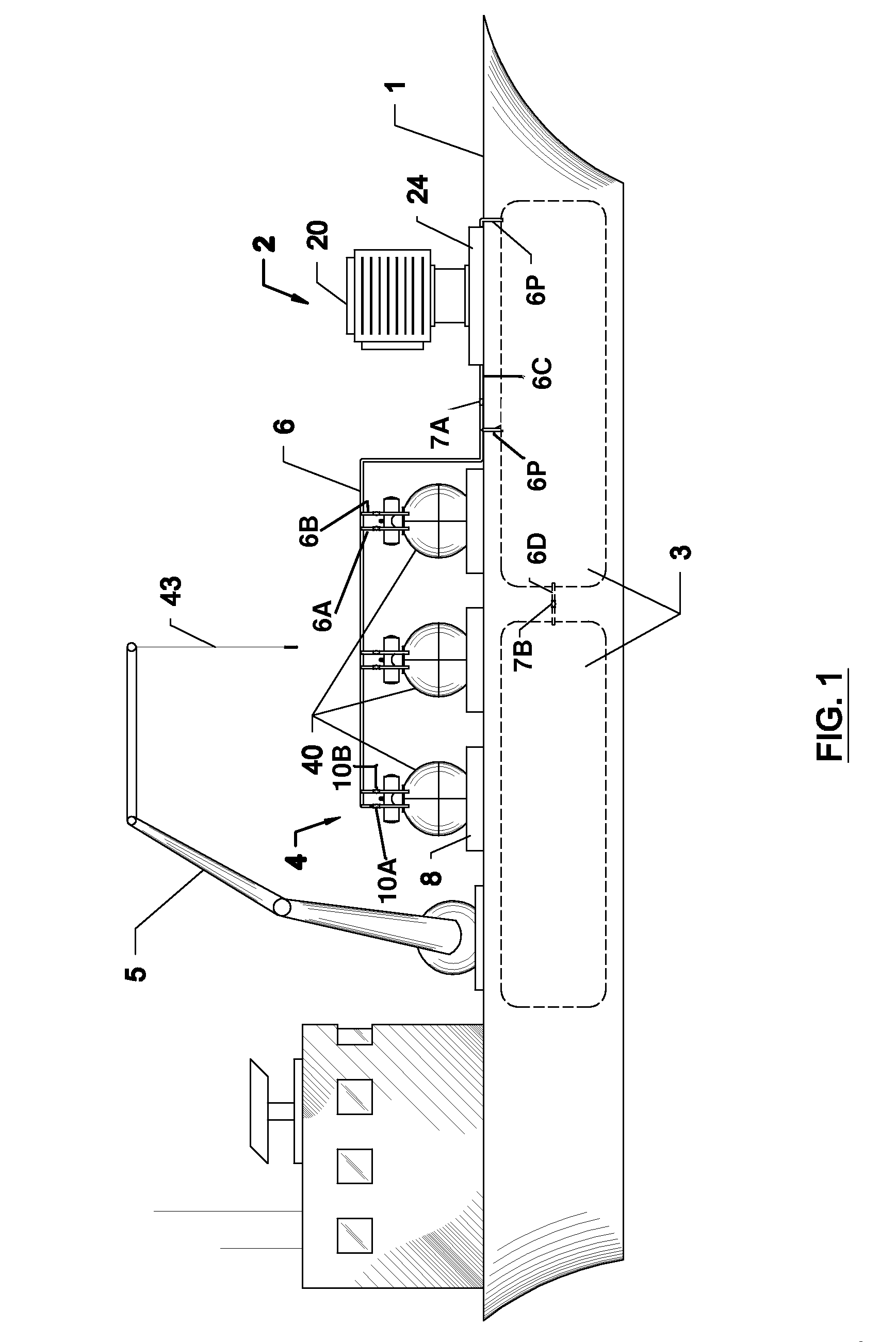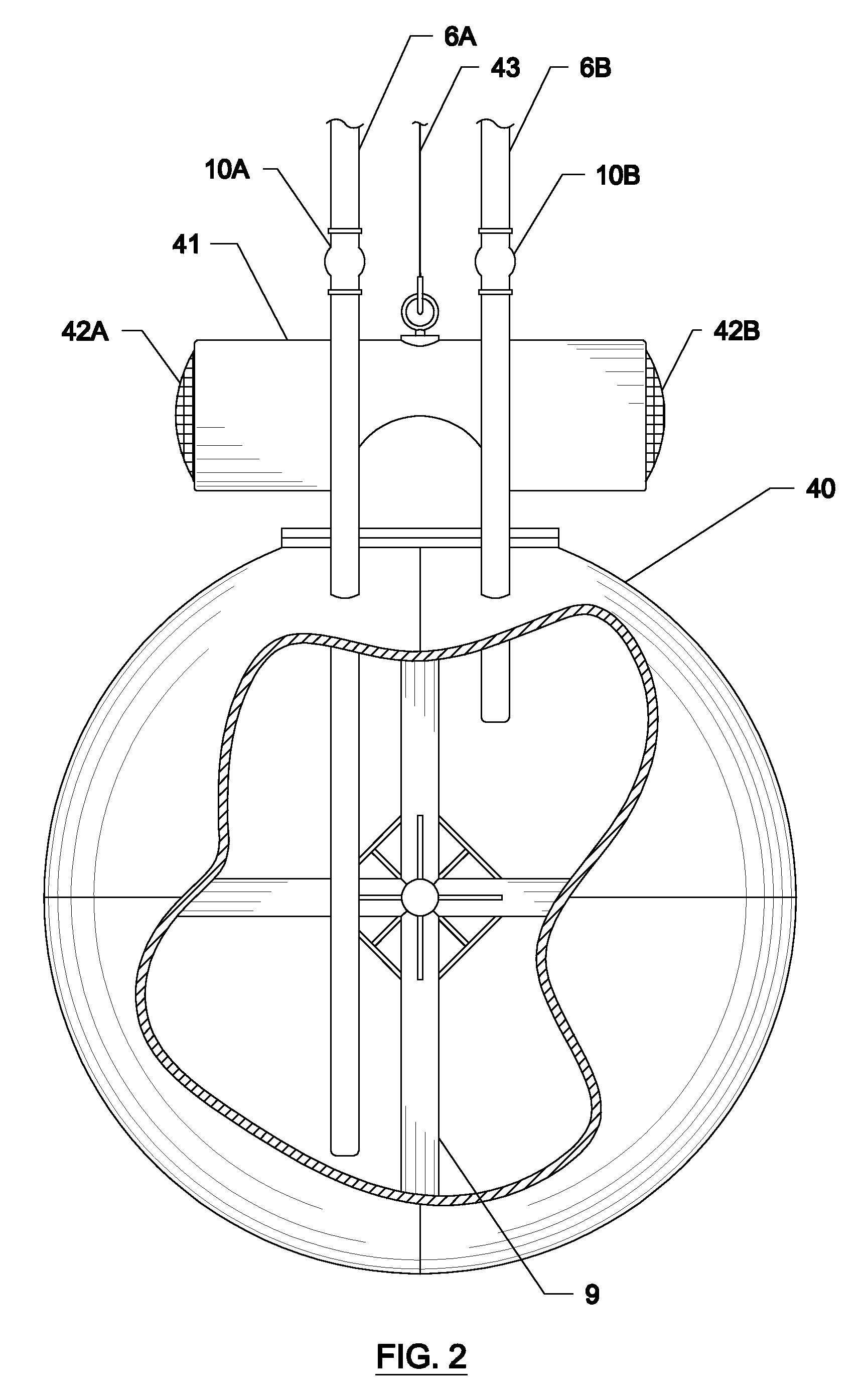Method, apparatus, and processes for producing potable water utilizing reverse osmosis at ocean depth in combination with shipboard moisture dehumidification
a technology of reverse osmosis and water supply, which is applied in the direction of vacuum distillation separation, multi-stage water/sewage treatment, domestic cooling apparatus, etc., can solve the problems of reducing the service life of the equipment etc. , to achieve the effect of related fouling, reducing the salt content, and reducing the risk of subsystem contamination
- Summary
- Abstract
- Description
- Claims
- Application Information
AI Technical Summary
Benefits of technology
Problems solved by technology
Method used
Image
Examples
Embodiment Construction
Referring initially to FIG. 1, a ship 1 (such as a tanker) outfitted with a potable water generation system according to an aspect of the present invention is shown. Ship 1 includes a dehumidification subsystem 2, one or more purified water storage tanks 3, RO subsystem 4, a crane or winch 5 and piping 6 that can convey the cold water from the RO subsystem 4 storage container to the dehumidification subsystem 2, and tanks 3. In a preferred form, the ship 1 is of a large-displacement variety. For example, the ship 1 may be a minimum 40,000 ton capacity, appropriately designed or modified as shown for the purpose of potable water production and storage. Such size must consider the ease with which ship 1 can navigate into and out of smaller ports and waterways, and it will be appreciated by those skilled in the art that different sizes commensurate with these restrictions are within the scope of the present invention.
The tanks 3 are preferably sterile, while portions of the piping 6 an...
PUM
| Property | Measurement | Unit |
|---|---|---|
| pressure | aaaaa | aaaaa |
| pressure | aaaaa | aaaaa |
| pressure | aaaaa | aaaaa |
Abstract
Description
Claims
Application Information
 Login to View More
Login to View More - R&D
- Intellectual Property
- Life Sciences
- Materials
- Tech Scout
- Unparalleled Data Quality
- Higher Quality Content
- 60% Fewer Hallucinations
Browse by: Latest US Patents, China's latest patents, Technical Efficacy Thesaurus, Application Domain, Technology Topic, Popular Technical Reports.
© 2025 PatSnap. All rights reserved.Legal|Privacy policy|Modern Slavery Act Transparency Statement|Sitemap|About US| Contact US: help@patsnap.com



